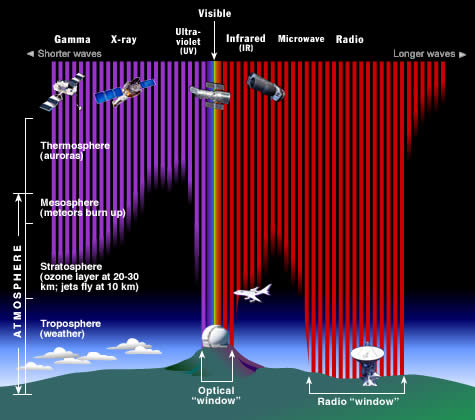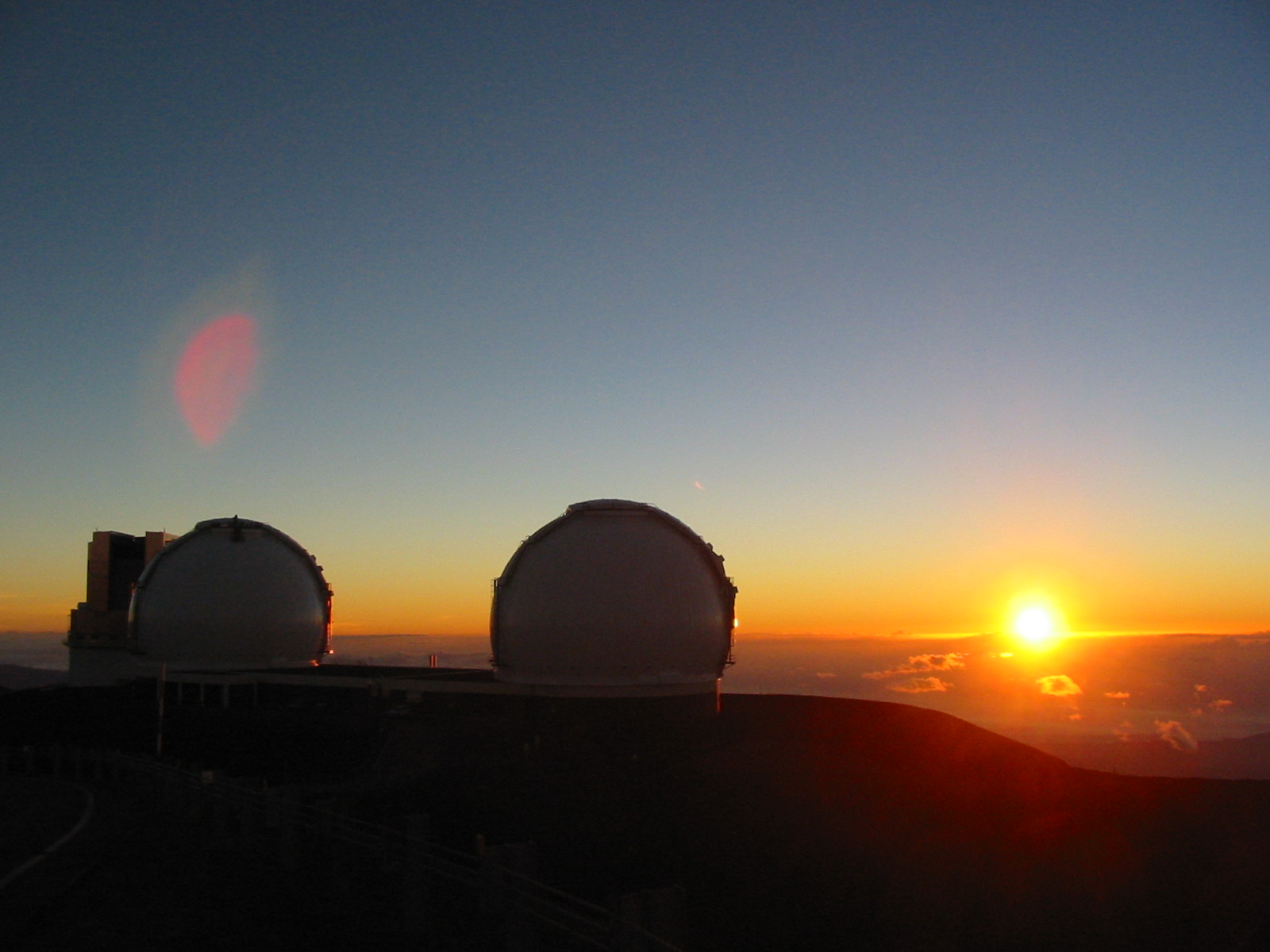Limitation
by eric
All human activities are subject to limits. Economic or technological trends determine the futures of jobs and businesses. Weather shapes agricultural yields. In athletics, the strength of an opponent’s or of one’s own body are decisive. Creativity, inspiration, and influence play roles in art and literature. Political progress requires coalition-building and persuasion. Some of these forces which create contingency may be resisted; others not.
Astronomy also operates within limits. Budgets and telescope time are finite. But the practice of astronomy also involves confronting more fundamental limits, those set by nature itself.
Astronomers observe the light emitted by sources at all wavelengths, from long, slow radio waves up to gamma-rays so energetic that their photons can be counted one by one. The Earth’s atmosphere absorbs light differently at different wavelengths. Thus, an astronomer studying supernovae in visible light travels to a dark mountaintop for clearer skies. A radio astronomer listening for ET or timing a pulsar can stay at ground level, but her array of dishes will be far from the electromagnetic noise of cities. Scientists building instruments to observe the X-rays and gamma-rays emitted by black holes or neutron stars will go to deserted locales to launch balloons and rockets. The wispy particles called neutrinos emitted by the sun must be observed underground in mines!
Our tools, too, are limited: some by expense or electronics, but others by basic properties of geometric optics or semiconductor detector physics.
I’d like to think that this daily, personal, bodily encounter with fundamental boundaries encourages a respect for external reality. For those who might think truth only an opinion, the universe offers ready reminders of its laws. Perspective, and a little humility, are some of science’s most valuable results.


